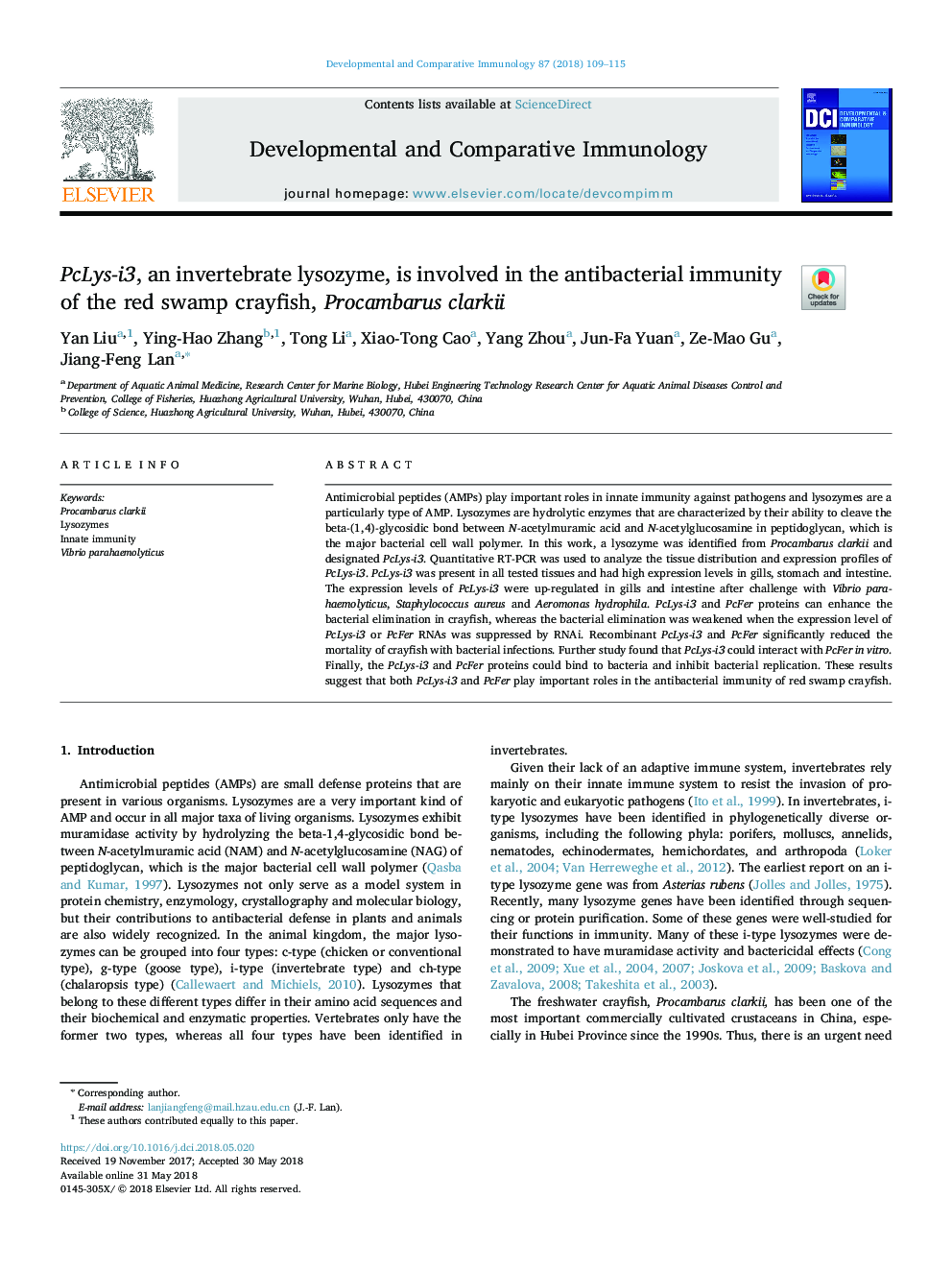| Article ID | Journal | Published Year | Pages | File Type |
|---|---|---|---|---|
| 8497642 | Developmental & Comparative Immunology | 2018 | 7 Pages |
Abstract
Antimicrobial peptides (AMPs) play important roles in innate immunity against pathogens and lysozymes are a particularly type of AMP. Lysozymes are hydrolytic enzymes that are characterized by their ability to cleave the beta-(1,4)-glycosidic bond between N-acetylmuramic acid and N-acetylglucosamine in peptidoglycan, which is the major bacterial cell wall polymer. In this work, a lysozyme was identiï¬ed from Procambarus clarkii and designated PcLys-i3. Quantitative RT-PCR was used to analyze the tissue distribution and expression profiles of PcLys-i3. PcLys-i3 was present in all tested tissues and had high expression levels in gills, stomach and intestine. The expression levels of PcLys-i3 were up-regulated in gills and intestine after challenge with Vibrio parahaemolyticus, Staphylococcus aureus and Aeromonas hydrophila. PcLys-i3 and PcFer proteins can enhance the bacterial elimination in crayfish, whereas the bacterial elimination was weakened when the expression level of PcLys-i3 or PcFer RNAs was suppressed by RNAi. Recombinant PcLys-i3 and PcFer significantly reduced the mortality of crayfish with bacterial infections. Further study found that PcLys-i3 could interact with PcFer in vitro. Finally, the PcLys-i3 and PcFer proteins could bind to bacteria and inhibit bacterial replication. These results suggest that both PcLys-i3 and PcFer play important roles in the antibacterial immunity of red swamp crayfish.
Related Topics
Life Sciences
Biochemistry, Genetics and Molecular Biology
Developmental Biology
Authors
Yan Liu, Ying-Hao Zhang, Tong Li, Xiao-Tong Cao, Yang Zhou, Jun-Fa Yuan, Ze-Mao Gu, Jiang-Feng Lan,
